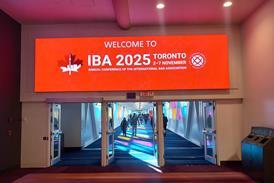In Ho v Adelekun [2021] UKSC 43, the Supreme Court considered the mechanics of qualified one-way costs shifting (QOCS). The claimant was injured in a road traffic accident in 2012. In 2017, she was offered £30,000 by the defendant in settlement of her claim in what was described as a ‘Part 36 offer letter’. In that letter, the defendant offered to pay the claimant’s costs ‘in accordance with Part 36 rule 13’, such costs to be subject to detailed assessment if not agreed, if the offer was accepted within 21 days. The claimant decided to accept the offer and a Tomlin order was subsequently made by consent. However, the defendant then argued that the claimant’s costs were limited to the fixed costs recoverable in accordance with the terms of Part 45 Section IIIA of the Civil Procedure Rules.

The dispute over the basis of costs assessment ended up in the Court of Appeal ([2019] EWCA Civ 198), which decided that only fixed recoverable costs were payable to the claimant. The defendant was awarded her costs of the appeal.
It was accepted by the parties that the QOCS scheme applied. Normally CPR rule 44.14(1) would permit a defendant to enforce a costs order against a claimant ‘to the extent that the aggregate amount in money terms of such orders does not exceed the aggregate amount in money terms of any orders for damages and interest made in favour of the claimant’. The claimant’s claim had concluded by way of a Tomlin order. There were no actual ‘orders for damages and interest’ made within the meaning of the QOCS regime, which would trigger the defendant’s right to enforce payment of her costs against any damages pursuant to rule 44.14(1). This point had been confirmed by the Court of Appeal in an earlier decision, Cartwright v Venduct Engineering Ltd [2018] EWCA Civ 1654. Consequently, the defendant could not enforce her appeal costs order against the claimant’s damages and interest award.
However, the question then arose as to whether the defendant could enforce or set off the claimant’s fixed costs (£16,700) against her appeal costs (£48,600). A differently constituted Court of Appeal had decided in another case, Howe v Motor Insurers’ Bureau [2020] Costs LR 297, that set-off of opposing costs orders was not affected by QOCS, because set-off was not a type of ‘enforcement’ for the purposes of rule 44.14(1). Consequently, the court did have the power to order set-off between costs orders in a QOCS case. The Court of Appeal in the present case was inclined to take the opposite view but considered itself bound to follow the decision in Howe. The claimant appealed to the Supreme Court with the Association of Personal Injury Lawyers intervening.
The Supreme Court gave a unanimous judgment. It considered the operation of the QOCS scheme and two government statements that immediately preceded the approval by parliament of the QOCS rules. Both contemplated that the claimant’s damages were the only fund against which the defendant might recover costs. If the true construction of the QOCS scheme had adverse policy consequences, that was a matter for the Civil Procedure Rule Committee to put right. The real question was one of construction of the language of the QOCS provisions in the CPR.
First, the QOCS regime did not prevent a trial judge from making a single, one-way, costs order which was the result of adjusting in the judge’s mind the appropriate costs order in the light of the parties’ respective successes or failures on different issues.
Second, the QOCS regime was essentially mechanical rather than discretionary, so that the phrase in rule 44.14(1) ‘without the permission of the court’ did not preserve a general discretionary power to permit a defendant costs enforcement beyond that expressly provided for by the permission process in rule 44.16.
Third, rule 44.14 did not operate as a total ban of set-off of opposing costs orders.
QOCS was intended to be a complete code about what a defendant in a personal injury case could do with costs orders obtained against the claimant. The defendant could recover the costs ordered, by any means available, including set-off against an opposing costs order, but only up to the monetary amount of the claimant’s orders for damages and interest.
Rule 44.14(1) required two comparators to be constructed: A – the aggregate amount in money terms of all costs orders in favour of the defendant; and B – the aggregate amount in money terms of all orders for damages and interest in favour of the claimant. If A was less than or equal to B, the defendant could enforce his costs orders without limit. If A was more than B, then the defendant could only enforce his costs orders up to the monetary limit of B. The defendant needed to calculate A by reference to the aggregate amount in money terms of all the defendant’s costs orders made against the claimant, not the net amount arrived at by netting off opposing costs orders and striking a net balance.
The Supreme Court did recognise that this conclusion might lead to unfair results. Why should a defendant with a substantial costs order in his favour have to pay out costs to a claimant under an order made against him when the two costs orders would net off against each other, leaving both sides to meet their own solicitor’s costs themselves?
In the view of the Supreme Court, that was the result that followed from the true construction of the wording used in Part 44. Any apparent unfairness in an individual case was part and parcel of the overall QOCS scheme devised to protect claimants against liability for costs and to lift from defendants’ insurers the burden of paying success fees and ATE premiums in the many cases in which claimants were successful.
The Supreme Court considered that the Court of Appeal was right in the present case to doubt whether Howe was correctly decided. They would allow the claimant’s appeal.
Malcolm Johnson is legal director and head of child abuse compensation claims at Lime Solicitors, London































No comments yet